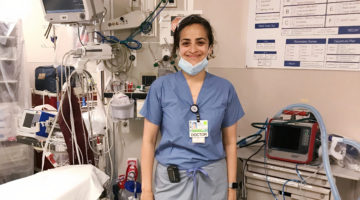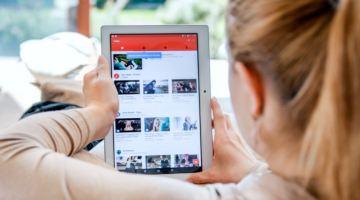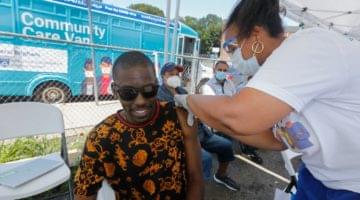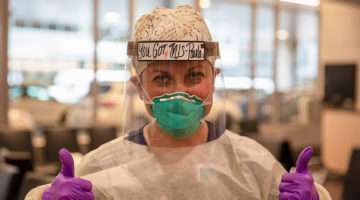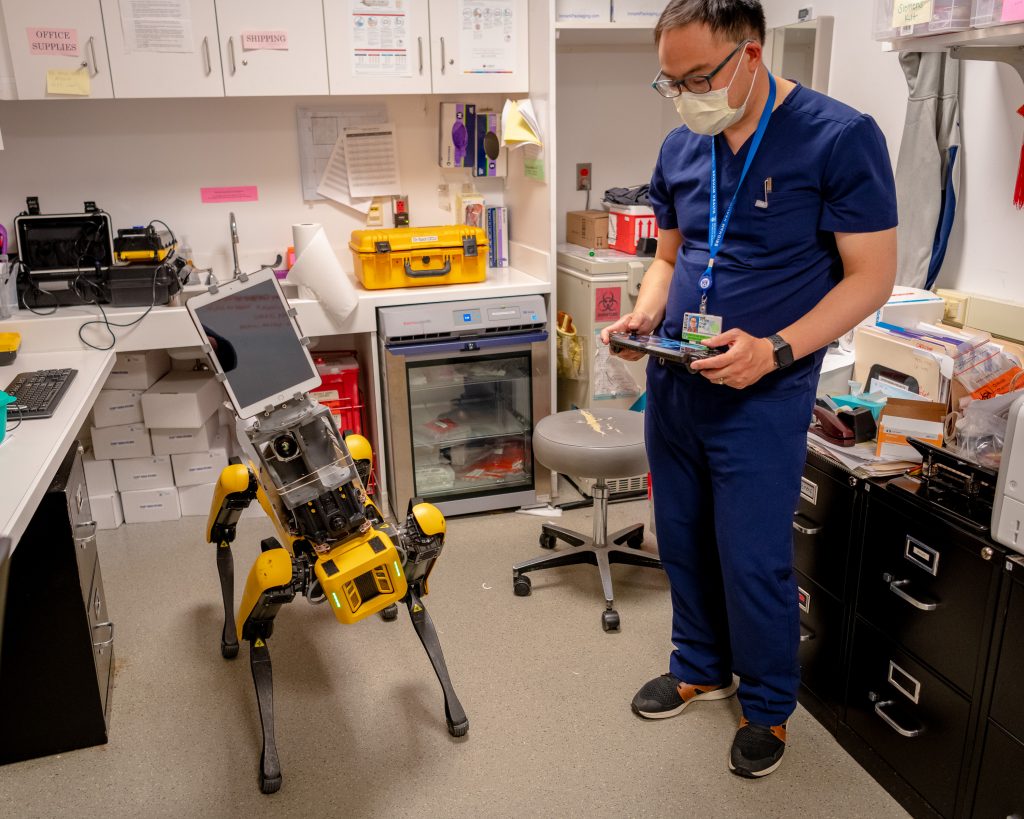
Creative problem solving flourished during the initial surge of the COVID-19 pandemic. In the Brigham’s Emergency Department (ED), a research team piloted the use of Boston Dynamics’ four-legged robot, known as Spot, which was equipped with a video conferencing-enabled tablet. To conserve personal protective equipment (PPE), providers sent Spot to interact with and evaluate patients in a triage tent outside the ED.
The team also deployed hundreds of electronic tablets to help patients hospitalized with COVID-19 interact with their providers with secure video conferencing. Through a bedside tablet in the patient’s room, clinicians could initiate video chats using a computer or mobile device—relieving providers from needing to enter patient rooms for every routine conversation. The tablets also helped patients stay connected with loved ones who could not visit in person.
In an effort to help clinical staff safely communicate in the COVID unit, Brigham information systems staff expanded the hospital’s use of Vocera, a system of lightweight, wearable badges that staff can clip to scrubs or a gown for hands-free, real-time voice communication. The badges allowed nurses wearing PPE in patient rooms to talk with colleagues in the hall.
“A silver lining of the COVID-19 pandemic has been the rapid adoption of new technologies,” says Adam Landman, MD, vice president and chief information and digital innovation officer at the Brigham. “We have achieved years of digital transformation in just a few months. I’m especially proud of my colleagues in information systems, virtual care, and the digital innovation hub, who worked tirelessly to rapidly deploy these new tools to frontline clinicians.”



